How Microfinance Became the ‘It’ Development Program
Microfinance has been touted as a miracle cure for poverty in the global south. The reality has been a lot messier.
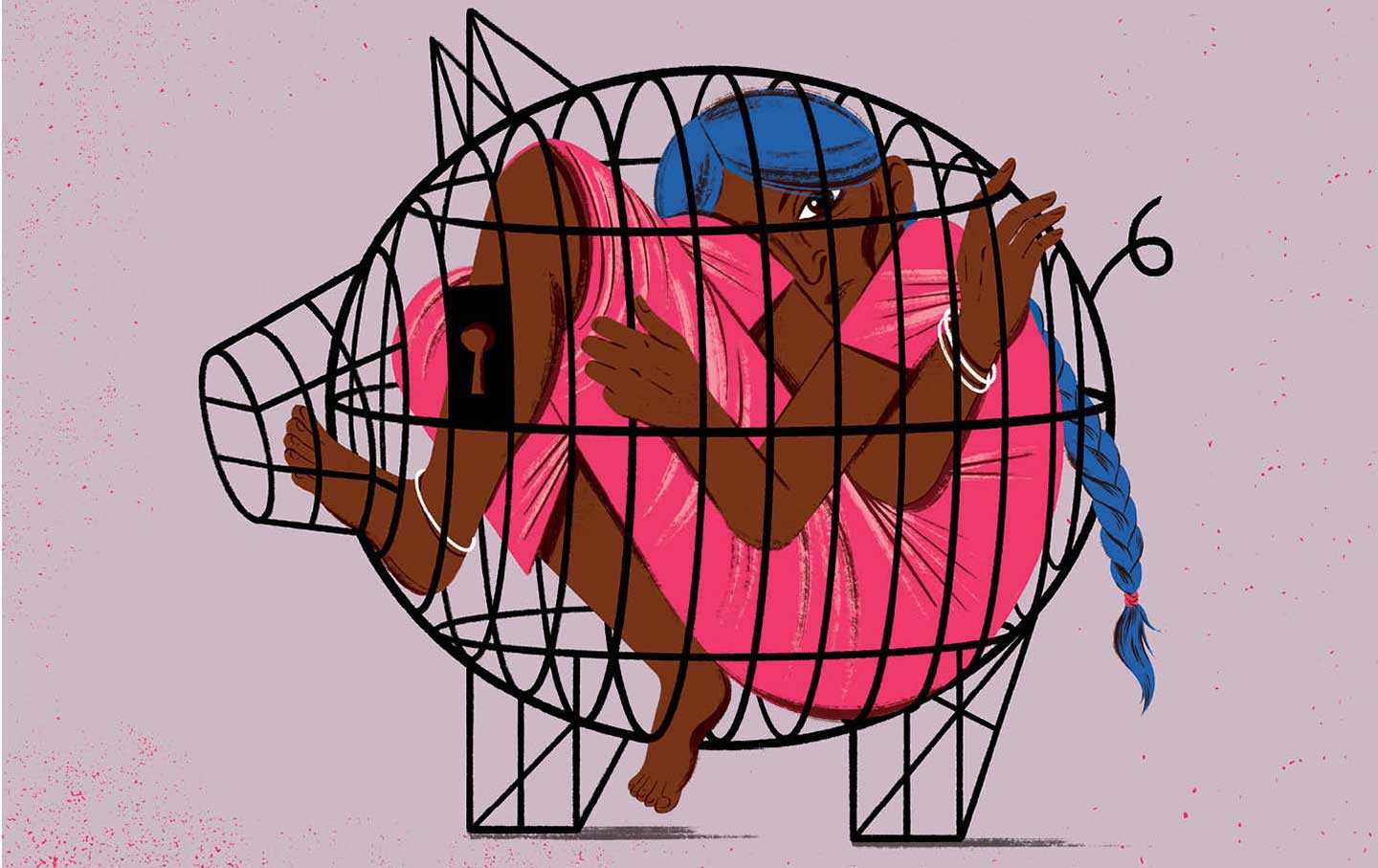
Yabom was lucky. She heard a flat tone, then an abrupt pop. A moment of silence, then the flat tone again. “Thank God,” she thought. The phone was ringing.
Yabom hadn’t been certain that her friend Musu’s phone would be on. It was almost late afternoon, and Yabom, who was calling from the police station, guessed that the electricity would be off just a few blocks away at Old Post, the neighborhood where she lived with her kids at the edge of Koidu, a city in eastern Sierra Leone. (“Yabom” and “Old Post” are both pseudonyms to help protect the identity of the woman at the center of this story.)
Old Post had been there from before Yabom was born. It had been built by the British back in “colonial times,” to house the workers who toiled in the region’s impressive diamond mines. But the jobs had dried up as the deposits were depleted. Today, although a colossal, industrialized mine run by a foreign company overlooks Old Post, most of the miners are informal, poorly paid laborers who make $1 to $4 a day.
Yabom knew that even though the mine had reliable electricity, power was more sporadic for the rest of Koidu, always cutting out when the heat was most oppressive. Like it was now. Yabom could almost see the humidity clinging to the police station’s low ceilings. Beads of sweat formed on the blue walls; the ceiling fans looked nice, even if they didn’t move.
Another ring, silence, ring. If Yabom had only been allowed to step outside and walk to Old Post, she would have been there in just a few minutes. But the officer in charge of her case had told her that she couldn’t leave—not even to ask a friend for a favor, not even to tell her kids what had happened.
Yabom had crossed a line. She had taken out a number of microfinance loans and now owed too much money. The official interest rates for the loans was around 30 percent, but the fees that were forever being tacked on made the effective rate much higher. And as a single mom working informal jobs in one of the poorest countries in the world, Yabom found it hard to keep up with the payments. Every time she missed one, she was fined, which pushed the subsequent payments up even higher. As her debts mounted, Yabom found herself facing the possibility that, under the antiquated colonial-era law, her financial situation would be considered a criminal matter. If she didn’t have the money to make a payment today—and, clearly, she didn’t—the police would have to investigate her case. She would remain in their custody while they did.
As the reality of her situation set in, Yabom asked if she could use a phone for just a minute. She had to figure out what to do with her kids.
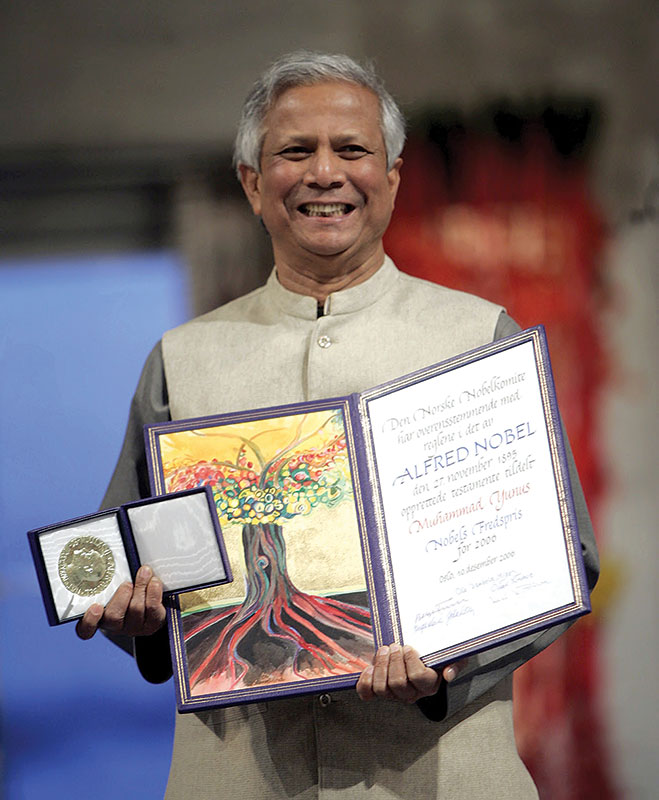
I first heard about microfinance when I was around 16 years old, when a mentor suggested that, given my interest in “global issues,” I should read Banker to the Poor by the Bangladeshi economist Muhammad Yunus. I had never heard of Yunus or “microcredit,” the term he used to describe lending small amounts of money to poor women to help them become self-sufficient. As I learned from Yunus’s biography, he had stumbled upon the idea when he lent $27 to 42 women in the village of Jobra in the wake of a famine that had devastated Bangladesh in the 1970s. These women, who had been shut out of the formal credit offered by banks, used the money to invest in small, homegrown businesses and easily paid off their loans. So Yunus decided to lend more. In 1983, he started the Grameen Bank to expand small-scale lending in the country.
Yunus was convinced that microcredit, particularly if it were funneled toward women, could end poverty. With loans of just a few dollars, women could start and sustain small businesses, using the profits to care for themselves and their families. Yunus claimed that focusing on women would bring one of the most marginalized groups into the economy. And because of their innate sense of duty as caregivers, or so he maintained, their success would also mean the success of their children and their communities. Through something as simple as a small loan, Yunus argued, gender equality could be achieved, economies and neighborhoods strengthened. My mentor, herself a staunch feminist, insisted that this was an idea that was changing the world.
She seemed to be right. Within a few years, Muhammad Yunus and the Grameen Bank would share the Nobel Peace Prize “for their efforts to create economic and social development from below.” In 2010 alone, according to estimates, over 200 million families had been impacted by microfinance loans. I began to notice the word “microcredit” in newspaper headlines and in fundraising pleas from international organizations, which now promised to give loans alongside the other supports they were providing, like healthcare, so that the women they worked with could become economically independent. In the early 2000s, microfinance seemed to be everywhere, even if it was mentioned only briefly: in college economics and international relations courses, in speeches by political leaders, in interviews with celebrities. Bill and Hillary Clinton had become staunch supporters, both in the White House and as private citizens; Natalie Portman supported the microfinance organization FINCA, noting that the loans were “not charity. It’s just widening opportunity.”
And then suddenly, around 2010, I stopped hearing much about microfinance. It was as if the program that had promised to uplift millions had quietly died.
Microfinance remained an afterthought until I moved to Sierra Leone in 2015, when I took a job with a health organization just as the country was emerging from the largest Ebola outbreak in world history. A couple of years into my stay, a colleague mentioned that in her previous job at a Sierra Leonean legal aid organization called AdvocAid, she had documented cases of women being taken by the police and sent to prison for failing to pay off their microfinance loans. She explained that the law in Sierra Leone can be interpreted to penalize debtors of all kinds, allowing for criminal cases to be pursued against them.
I have a vivid memory of how surprised I was: not only that women were becoming entangled in the criminal justice system for small debts, but also that microfinance still existed, that people—many people, according to my colleague—were continuing to take out these loans. From my American vantage point, formed by reading the news and by conversations with academics and people who worked in international NGOs based back at home, microfinance had fallen far out of favor. I remember saying something like, “I kind of forgot about microfinance!” My colleague, appropriately, snapped back, “Go ask anyone here—many people take it.”
Later that afternoon, I walked across the street to the produce vendor I often bought cabbage, mangoes, pineapple, and coriander from and asked her if she knew of anyone who had taken out such a loan. She looked at me like I was an idiot. “Yes. I’ve taken out many. Many! Every few months. In fact, I have a few right now.” I asked her whether she had ever heard of anyone being taken by the police when they couldn’t pay back their loans. She hesitated. She said she’d never had a problem herself but had heard of other women who had—those who, as she put it, “weren’t very careful.” Back at the office, I asked a colleague whether he knew anyone who had taken out microfinance loans. “Yes!” he said. “My wife!”
Somehow I had missed all of this, apparently blind to the circumstances around me. I had paid attention only to one side of the equation: to those who designed and funded and talked up the astounding promises of new anti-poverty programs like microcredit. I had completely ignored the other side: the people who experienced those programs in their day-to-day lives, who were living with them long after the books and celebrity campaigns had stopped promoting them.
I wanted to know more—to understand how and why microfinance had become so popular in the West, how the narratives around it had changed, and how it continued to affect the lives of borrowers around the world. Mostly, though, I wanted to know how the borrowers themselves understood these loans.
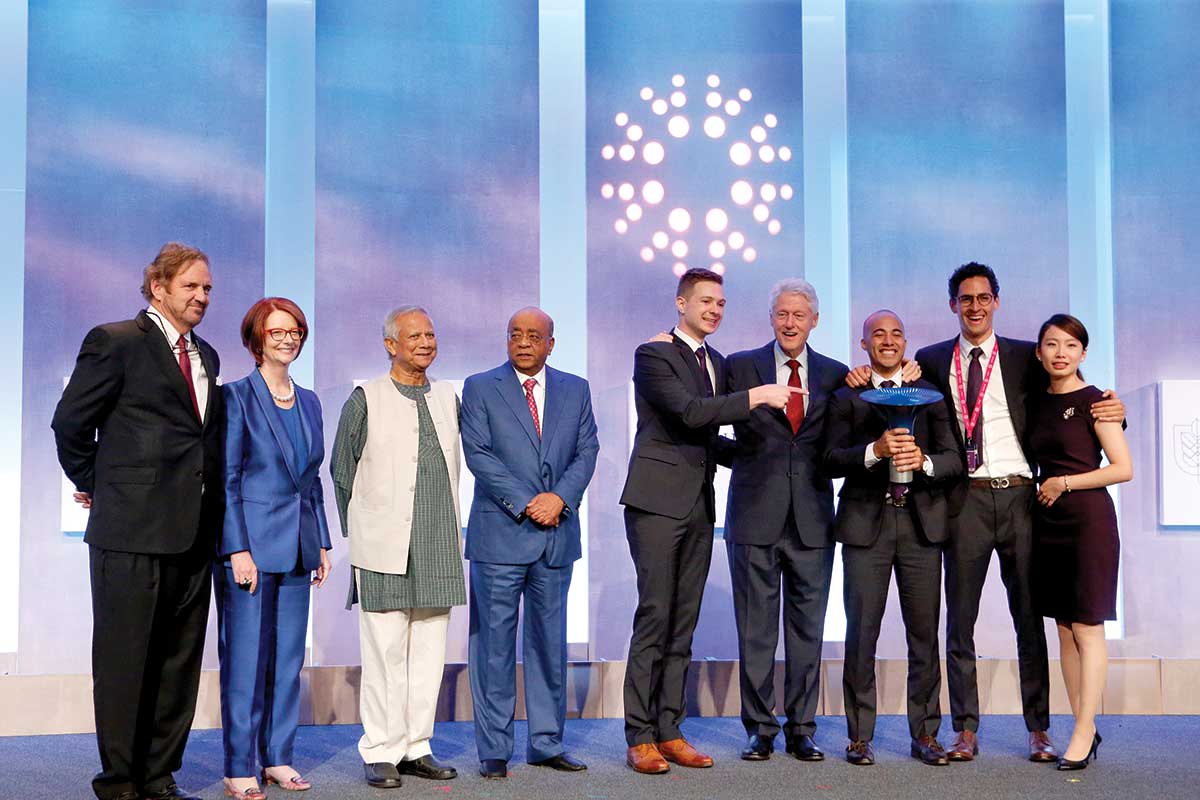
In the summer of 2019, after returning to the US for a period, I went back to Sierra Leone to try to find answers to these questions. I started by interviewing the staff at AdvocAid, which helped women who were taken to police stations or put in jail over unpaid debt. Through them, I met women who were awaiting trial or in jail for unpaid debts or other petty crimes, or those who had already been in prison for unpaid debts, sometimes for years, often without a trial. I also hung around market stalls, where I spoke to as many women who had taken out microfinance loans as I could find. The experiences of these women varied widely, but they had all been motivated by hope, by a series of “ifs”: if I had money; if I had a bigger business; if I had a fixed location to sell my wares from, rather than my house; if I could buy goods from China and bring them directly here; if I could buy cheaply from rural areas to sell in town. “If” so, then life would be better.
For some of these women, the ifs had borne out. Out of the 100 or so that I interviewed, I met three who said with certainty that they had been able to expand their businesses thanks to a microfinance loan. Several others said that more substantial help came from family or political connections, or admitted that they succeeded because they already had a steady business and that the loan was just a cherry on top. Of the three that had been transformed by microfinance, one had a particularly dramatic story. She said that the only reason she was able to leave her husband, who had become abusive after he learned that she was HIV-positive, was the freedom that a microfinance loan offered. She used the money to start a successful fish business, eventually remarried, and, by the time we met, had enough money to comfortably take care of herself and her kids. The second successful woman sold plastic jewelry in the country’s main market and had taken out a $60 loan to expand the wares on her table, which led to more sales. The third was an elegant woman who gave off the scent of a newly opened perfume bottle; she had bundled together multiple microfinance loans to buy a plane ticket to China and returned with suitcases full of clothes, which she then sold to other women to sell at markets in Sierra Leone’s capital, Freetown.
But I met many more women who complained about the loans: that they were too small to do anything substantial with, that the repayments were too high and came too fast or ate into their profits, essentially nullifying any business growth. I noticed that these women were visibly poorer than the ones who said they were successful, with clothes that had worn thin and stalls that were less impressive. Many had taken out a series of loans, one to pay off another, from multiple sources: different microfinance companies, their husband’s boss at work, another market vendor—a balancing act that might help them keep their head above water but was also immensely stressful. Each woman I spoke with was clear-eyed about the risks of debt. They had seen friends, neighbors, and family members go to jail or leave their homes and communities when they could not pay off a loan.
But they also described tangible benefits. Not of launching successful businesses that propelled them out of poverty, as Muhammad Yunus had promised, but of more basic wins like covering school fees and rent. Many said they were “managing,” using a word in Krio, the lingua franca of Sierra Leone, that suggested they were getting by, but only just.
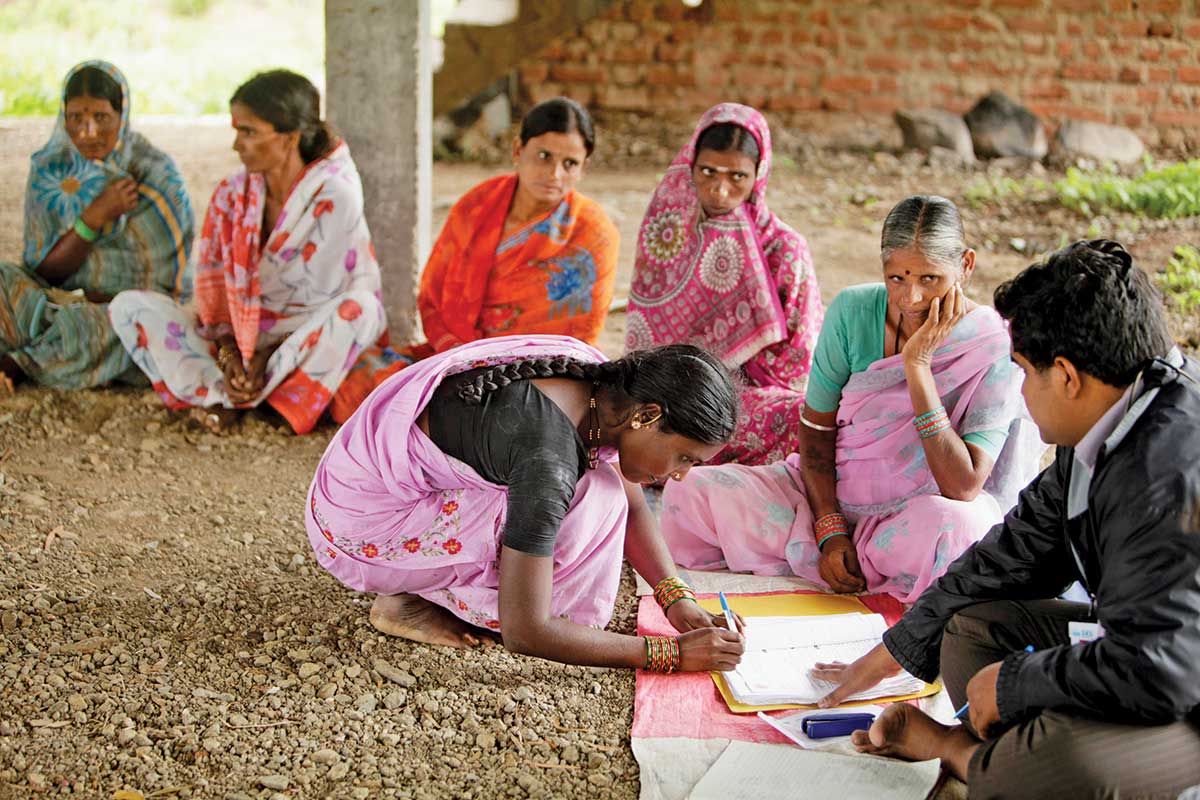
Part of the allure of Yunus’s story—the origin story, for many, of microfinance itself—is the supposed singularity of his ingenuity. As he writes in Banker to the Poor and has mentioned innumerable times before and since, his decision to give $27 to 42 women was inspired by a mix of critical observation, empathy, and creativity unique to him: Only he, the son of a successful entrepreneur—someone trained in economics in the capitalist West but whose true north was his mother’s devotion to the poor, and who had his eyes opened to the harsh reality of the country he loved during the early 1970s famine—could have imagined such a solution to poverty. Only he could have “invented” microfinance.
Popular
“swipe left below to view more authors”Swipe →It’s a compelling argument. Certainly Yunus has done more to proselytize the poverty-fighting power of small loans than anyone else. For many of us, if we know anything about it, the idea of microcredit conjures up an image of Yunus’s smiling face. He’s undoubtedly the icon of the idea. But the truth is that he didn’t come up with the idea alone—nor was he the sole force behind its wildfire spread.
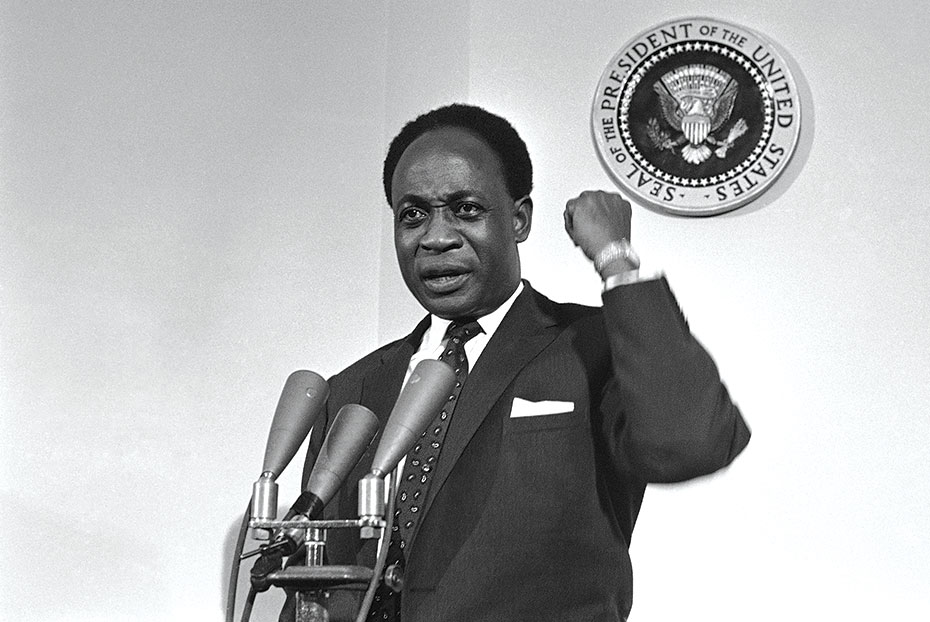
While Yunus was tinkering with tiny loans in Jobra, several other small-scale lending programs were starting in other parts of the world, from Latin America to Indonesia. Their growth reflected a larger shift that was taking place alongside anti-colonial independence movements around the world—away from top-down, big-ticket, Western-led development programs and toward grassroots efforts that repudiated Western models. Anti-colonial thinkers like the Guyanese writer Walter Rodney, the author of How Europe Underdeveloped Africa, explicitly rejected the economic model put forward by Europe and America, which Rodney saw as a kind of overdevelopment, a grotesque excess that newly independent nations shouldn’t emulate (he suggested that the reason Guyana was “underdeveloped” was the centuries of theft by Britain). At the same time, a variety of other anti-colonial leaders and movements were advancing potent alternatives to interventionist Western programs, including Mahatma Gandhi and his movement for Indian self-sufficiency; the Black Panthers, who spearheaded free breakfast programs and other mutual aid efforts; and Kwame Nkrumah, the first prime minister and then president of Ghana, who championed the idea that Africa’s economic and political development should be left up to Africans. One Bangladeshi organization described the skepticism toward outside intervention and the turn to grassroots, bottom-up development this way: “Man must be given the opportunity to think for himself, speak for himself, work for himself and even make mistakes for himself.”
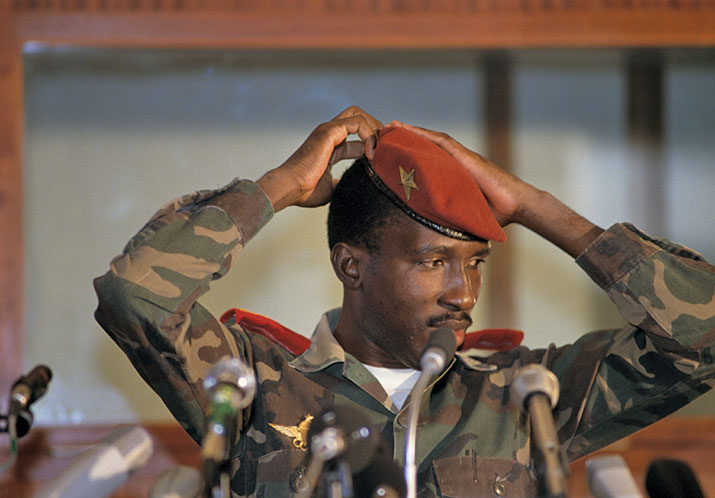
The ineptitude of the growing numbers of outside development projects only strengthened their case. There were reports from many countries—Bangladesh, India, Mexico, and others—of communities flooded by new dams and displaced by new roads; of half-built schools without textbooks and clinics without medicine; of waste, mismanagement, nepotism; of money going to the already enriched—all of which seemed even more unfortunate considering how much debt poor countries were taking on to fund them. Independence and post-independence leaders expressed indignation at having to whittle down already limited budgets to pay off foreign loans that had done little to benefit their countries in the first place. In the 1980s, Thomas Sankara, the Marxist-Leninist and Pan-Africanist president of Burkina Faso, observed, “The origins of the debt date back to the origins of colonialism. Those who lent us the money, they are the ones who colonized us. They are the same people who managed our states and our economies. It was the colonizers who led Africa to contract loans with creditors of the North…. We are strangers to this debt. Therefore we cannot repay it.” Julius Nyerere, the president of Tanzania from 1964 to 1985, implored the country’s creditors: “Must we starve our children to pay our debts?”
By the last third of the 20th century, there was a prevailing sense that expensive, top-down development projects had failed. Many skeptics, from Accra to Mexico City to the corridors of Washington, DC, were gravitating toward a new approach—slow and small, with the poorest in mind.
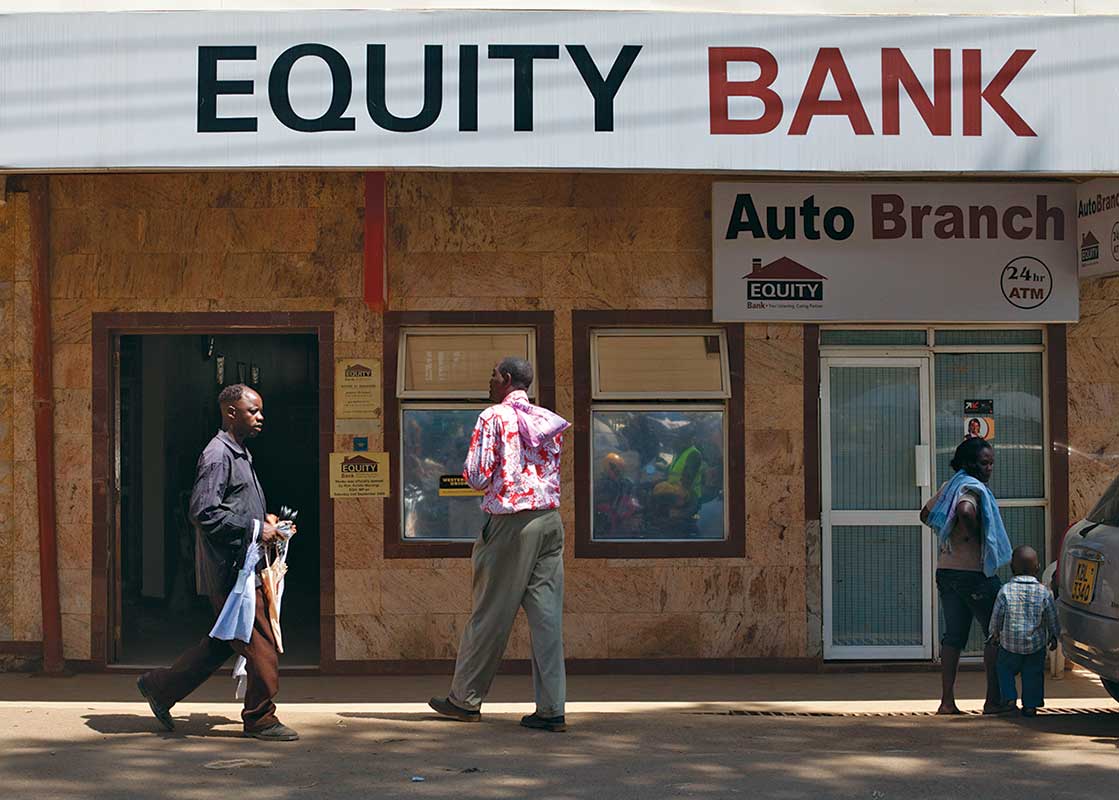
In 1972, a report from the International Labor Organization, a UN body, first used the term “informal sector” to describe the millions of people whose work was not captured by measures like the gross national product, which quantified economic progress by tracking a country’s production and consumption. By one estimate, up to 70 percent of the urban labor force in poor countries was involved not in the “official” economy but in small, off-the-books activities like fruit vending and tailoring. The breadth of such informal activities reflected, in part, a geographic shift: Many poor people now lived on the margins of cities, which were growing at an exponential rate. As economies moved toward manufacturing and export-oriented resource extraction and opened their doors to cheap imports, often at the behest of the World Bank and the International Monetary Fund, agrarian sectors withered. Rural migrants were drawn to urban areas by the promise of industrialization.
But the jobs didn’t always materialize. As more people flooded into cities like Lagos, Caracas, Nairobi, and Mexico City, researchers estimated that hundreds of millions of people would need to rely on small businesses to get by instead of traditional farming or official employment. The shift from rural to urban and toward the informal sector was so remarkable that in 1969, the US Congress—some of whose members represented fractious cities that themselves were being transformed by migration, civil strife, and “white flight”—provided funding for the US Agency for International Development (USAID) to create an Urban Development Office in an attempt to understand and support these very small enterprises being created in cities around the world. Such recognition of the informal sector, as one microfinance staffer later put it, acknowledged that the butcher, the baker, and the candlestick maker were important economic contributors, too.
To develop a comprehensive economic policy, Western economists and policymakers realized that they needed to focus not only on the top—on government and big businesses—but on the middle and bottom, too. One American researcher observed that those living in slums in Port-au-Prince, Haiti, although desperately poor, were mostly “employed” in that they were busy every day making and hawking goods or selling their labor. What if these small entrepreneurs could be made even more productive? Could they then earn more than just pennies a day? And if they did, would that solve some of the problems that large-scale development programs had not?
Yunus was excited about the informal sector, which he called the “people’s economy.” He didn’t see people clutching at “ephemeral opportunities,” in the words of one anthropologist, because they were excluded from both the formal economic system and the traditional activities their forebears had relied on. Instead, Yunus concluded that the millions of people slinging mangoes or sewing clothes were demonstrating their resourcefulness and innate entrepreneurial ability. “Microeconomic theory…is incomplete,” he would argue in Banker to the Poor. “It views individual human beings as either consumers or laborers and essentially ignores their potential as self-employed individuals.” Self-employment was not “a symptom of underdevelopment,” as some economists had claimed; instead, it “represents the people’s own effort to create their own jobs.” The shift could be emancipatory. “If all of us started to view every single human being, even the barefooted one begging in the street, as a potential entrepreneur…the old wall between entrepreneurs and laborers would disappear.”
There were other advocates of the informal sector, including some unlikely ones: Many feminists also lauded the newfound focus on this previously unrecognized aspect of the economy. Because traditional international development had emphasized strengthening the formal economy, such programs had gravitated toward those working in factories and on construction sites—in most cases, men. The expansion of formal employment, some feminists argued, had the effect of increasing women’s domestic duties; with one party gone to work in factories or building roads, there was simply more work to be done at home. At the same time, focusing on formal work undermined traditional “women’s work”—domestic duties like child-rearing and cooking—by placing a higher relative value on out-of-the-house wage work. Others pointed out that many women were in fact engaging in paid, if not officially salaried, work by selling food and goods that they made at home or in a local market. When economists and policymakers considered only the formal economy, all of this was missed. But in the more expansive informal economy, such women could be recast as enterprising businesswomen, essential to a community’s well-being.
These characterizations of women as innate mothers, caregivers, homemakers, and entrepreneurs flirted with essentialism. But they did encourage policymakers to see women, sometimes for the first time, as formidable political and economic actors worthy of support. In 1973, the US Foreign Assistance Act was amended to “give particular attention to those programs, projects and activities [that] integrate women.” Two years later, the administrator of USAID proclaimed that women were “a vital human resource in the improvement of the quality of life in the developing world,” contributing “directly to national social and economic progress.” By the late 1970s, USAID had earmarked tens of millions of dollars for programs that supported “women as equal partners in the development process in the developing countries”—particularly programs that increased their economic production.
This newfound interest in women’s programs had another appeal: the promise of population control, namely through family planning. In the late 1950s and early ’60s, growing concerns about the overuse of natural resources and environmental degradation became wrapped up in an underlying anxiety about the rising numbers of humans in the world. If the population kept expanding, economists and environmentalists warned, there would be a point in the near future when the earth wouldn’t be able to sustain life. If both population growth and consumption were slowed, however, families could save, economic prosperity would be achievable, and the environment could be salvaged. “Empowering women” suggested empowering them not only to be economic actors but to take control of their reproductive lives. In both cases, they would be in the service of their nation’s—and the world’s—development.
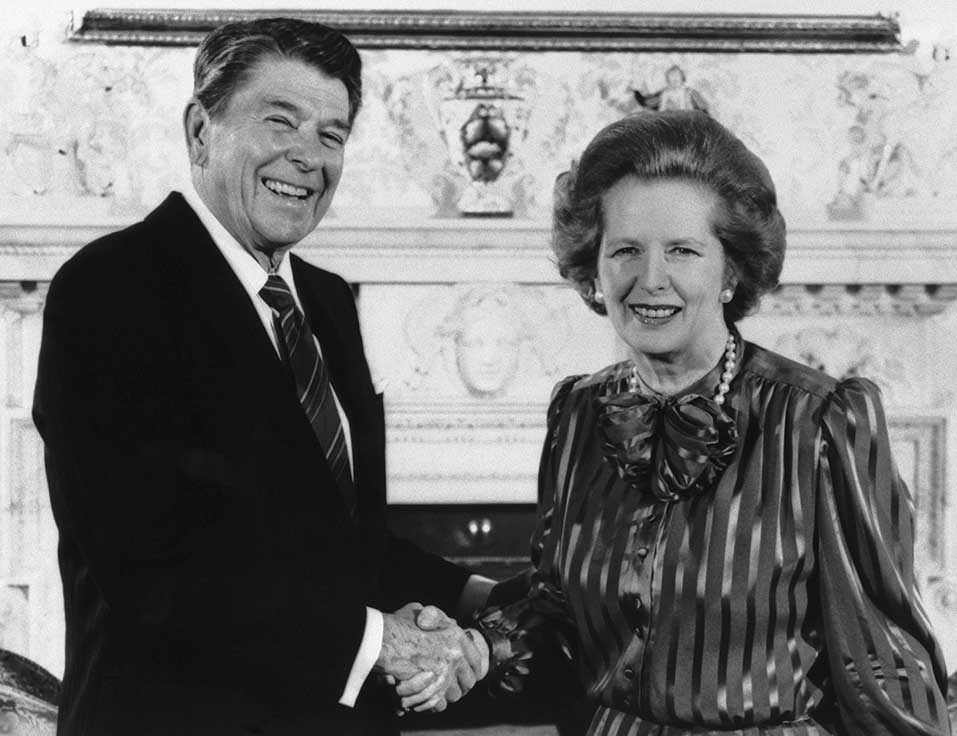
And here’s where microfinance fit in: The loans would focus on poor women working in the informal economy. Moreover, the loans could be self-sustaining, which added an extra appeal to donors. Microfinance loans required interest rates that were above the market rate; the extra revenue would cover a program’s operational costs, and repayments would be used to spur more lending. A program that would be paid for by the poor themselves fit perfectly with the blossoming neoliberal, market-led, individual-first era, which reached a fever pitch with the elections of Margaret Thatcher in 1979 and Ronald Reagan in 1980. In the United Kingdom, the United States, and around the world, efforts once based on charity or state support were exchanged for ones that relied on market forces. “Government,” Reagan argued, “does nothing as well or as economically as the private sector of the economy.” Government funding for basic necessities like healthcare, education, and food was cut; government agencies were culled, and services were privatized. Such neoliberal ideology and policy extended into the development world. Although USAID had always supported the private sector, it revved up this focus under Reagan. The year he took office, the agency, in its own words, “overlaid a predominant ‘private sector’ rationale” on the projects it supported. USAID now ensured that “market-based principles” were used to “restructure developing countries’ policies and institutions.”
Individuals were expected to thrive in this newly unleashed market. International development became dominated by what the anthropologist Erin Beck calls “bootstrap development,” characterized by the belief that “the poor could lift themselves out of poverty.” They would do so through their own “enterprise,” a word that became ubiquitous among aid agencies and “seemed to encapsulate everything good, everything hopeful, about energy, imagination, and free market activity,” according to the anthropologist Parker Shipton. Loans suited the times perfectly: a way to stimulate economic production without a large government hand, perhaps even a way to replace expensive government programs, all while embodying an American-style capitalism focused on individual effort. “Microfinance fit that bill,” an early advocate of these programs remembers. “It appealed to those who were typically free-market and to those who were pro-poor, pro-women, with more of a progressive ideology. It had something for everyone.”
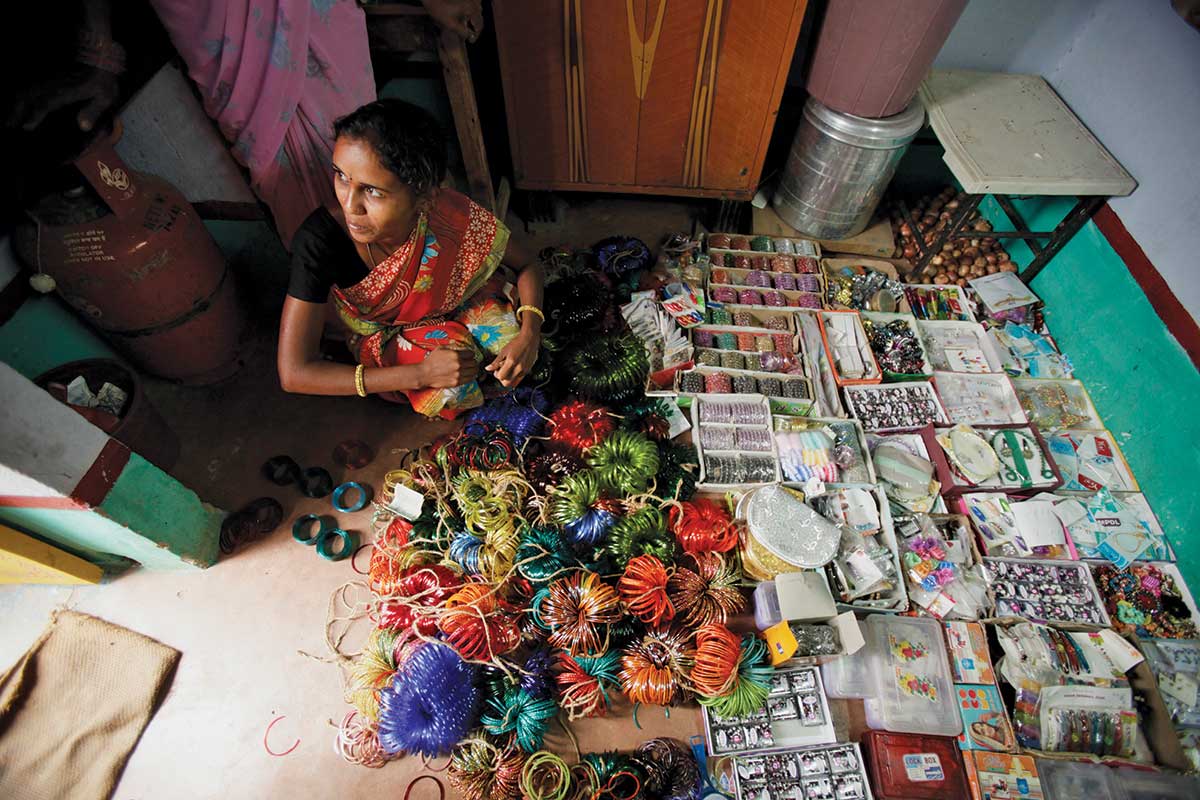
Decades later, in Koidu, Yabom was on the phone in the police station, facing the crime of being indebted to microfinance organizations that had promised, as Yunus had done, to “put poverty in museums.” Earlier that morning, Musu, Yabom’s friend in Old Post, had taken her cell phone to the charging station around the corner from her house. When she placed it on the wooden kiosk, the man who operated the shop looked up from his own phone in silent greeting. He charged 20 cents to power the phone for the day, or for as long as the electricity would last. Musu plugged the phone into a black charger attached to a long white power strip. Its battery bars blinked, then began to swell.
Satisfied, Musu walked down the dirt road that led out of Old Post and toward the center of Koidu, where diamond shops lined Post Office Road, a main thoroughfare. Even though the shops are not as plentiful as they once were, the city is still famous for the mineral, which made the region a critical and violent site in the country’s civil war, which lasted from 1991 to 2002. During the conflict, the district was intermittently controlled by rebels, then recaptured by the Sierra Leone Army, both of whom killed, raped, and maimed businesspeople, local chiefs, government officials, diamond sellers, mothers, and children. When it all finally ended, Koidu emerged devastated. Whole villages had been displaced. Farms had been neglected for years. Homes and schools lay in ruins.
Musu knew these streets well. She walked them most days, selling whatever she could get her hands on. Today, it was pineapples; she could smell them in the bucket she was carrying on her head. The scent of one told her that it was perfectly ripe—it gave off a soft, light sweetness that just barely reached her nose. Another had a stronger smell, a tinge of alcohol. She would have to sell that one first and offer a discount, lopping off 50 cents.
This wasn’t Musu’s preferred vocation. She wanted to start a business selling used clothes, generally referred to as “junks” in Sierra Leone. She thought it would be lucrative to sell men’s underpants to her husband’s colleagues over at the diamond mines. Having watched them over the years, Musu noticed what she considered an overlooked universal truth: Men always buy more clothing than women, despite allegations to the contrary. While women had learned to manage with whatever they had, men were vain, the first to spend extra cash on a new T-shirt or cologne. Musu was certain that if she could just carry junks around, instead of this rotting fruit, she could make $3, $5, $10 a day.
For now, though, she was in a sweet spot for the day’s pineapple job: far enough away from the main market to stave off any serious competition, but close enough to the heart of town to find the people with money. She walked down Post Office Road, stretching her legs wide over the open cracks in the sidewalks. When someone tssked her or called her by the name of the fruit on her head—“Pineapple, pineapple!” “Hey, pineapple!”—the basket swiveled toward the crier faster than Musu’s eyes could, her goods disconnected, momentarily, from the body that carried them.
After a few hours of pacing, she had finally sold all the pineapples. Musu saw that the shadows on the verandas of the diamond offices were growing longer. She placed the empty bucket on top of her head and started to walk home.
Back at the charging station, the phone rang soon after Musu pulled it from the cord. “Hello?” Musu’s voice rose with the “o.” To Yabom on the other end, Old Post sounded so tantalizingly close. She could hear the high-pitched squeals of kids, the rooster that crowed only when the time wasn’t right, the spoons scraping the bottom of pots. She could see from her spot at the police counter that it was that in-between hour when the day’s hustle had died down but the night’s had not yet begun. Finally, it would be cool enough for the boys at the soccer pitch to play, but still warm enough for the bars to put on some music and entice the few people with money to buy beers.
But Yabom needed one more thing done today. “Please,” she said to Musu. “I’m begging you.”
Years later, Musu wouldn’t be able to remember how much information Yabom had offered on the call: whether she knew where she was going or for how long. Maybe she had known and just hadn’t told Musu the details. “She just called me to ask me to take care of the kids. That’s it. I don’t know if Yabom went to Freetown or went to the barracks. All I know is that the two kids are here with me. I’ve never seen her again.”
Disobey authoritarians, support The Nation
Over the past year you’ve read Nation writers like Elie Mystal, Kaveh Akbar, John Nichols, Joan Walsh, Bryce Covert, Dave Zirin, Jeet Heer, Michael T. Klare, Katha Pollitt, Amy Littlefield, Gregg Gonsalves, and Sasha Abramsky take on the Trump family’s corruption, set the record straight about Robert F. Kennedy Jr.’s catastrophic Make America Healthy Again movement, survey the fallout and human cost of the DOGE wrecking ball, anticipate the Supreme Court’s dangerous antidemocratic rulings, and amplify successful tactics of resistance on the streets and in Congress.
We publish these stories because when members of our communities are being abducted, household debt is climbing, and AI data centers are causing water and electricity shortages, we have a duty as journalists to do all we can to inform the public.
In 2026, our aim is to do more than ever before—but we need your support to make that happen.
Through December 31, a generous donor will match all donations up to $75,000. That means that your contribution will be doubled, dollar for dollar. If we hit the full match, we’ll be starting 2026 with $150,000 to invest in the stories that impact real people’s lives—the kinds of stories that billionaire-owned, corporate-backed outlets aren’t covering.
With your support, our team will publish major stories that the president and his allies won’t want you to read. We’ll cover the emerging military-tech industrial complex and matters of war, peace, and surveillance, as well as the affordability crisis, hunger, housing, healthcare, the environment, attacks on reproductive rights, and much more. At the same time, we’ll imagine alternatives to Trumpian rule and uplift efforts to create a better world, here and now.
While your gift has twice the impact, I’m asking you to support The Nation with a donation today. You’ll empower the journalists, editors, and fact-checkers best equipped to hold this authoritarian administration to account.
I hope you won’t miss this moment—donate to The Nation today.
Onward,
Katrina vanden Heuvel
Editor and publisher, The Nation
More from The Nation
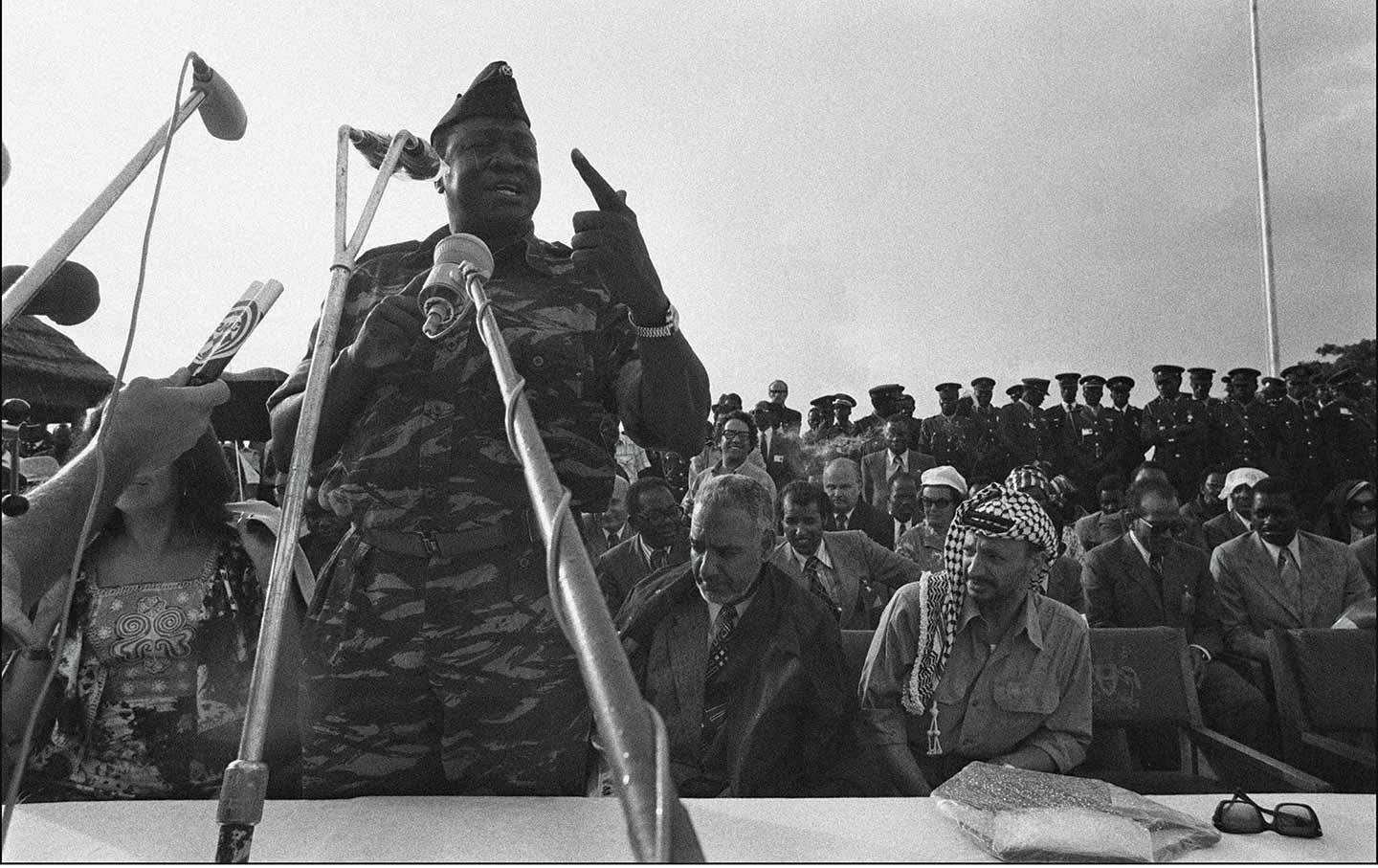
Mahmood Mamdani’s Uganda Mahmood Mamdani’s Uganda
In his new book Slow Poison, the accomplished anthropologist revisits the Idi Amin and Yoweri Museveni years.

The US Is Looking More Like Putin’s Russia Every Day The US Is Looking More Like Putin’s Russia Every Day
We may already be on a superhighway to the sort of class- and race-stratified autocracy that it took Russia so many years to become after the Soviet Union collapsed.
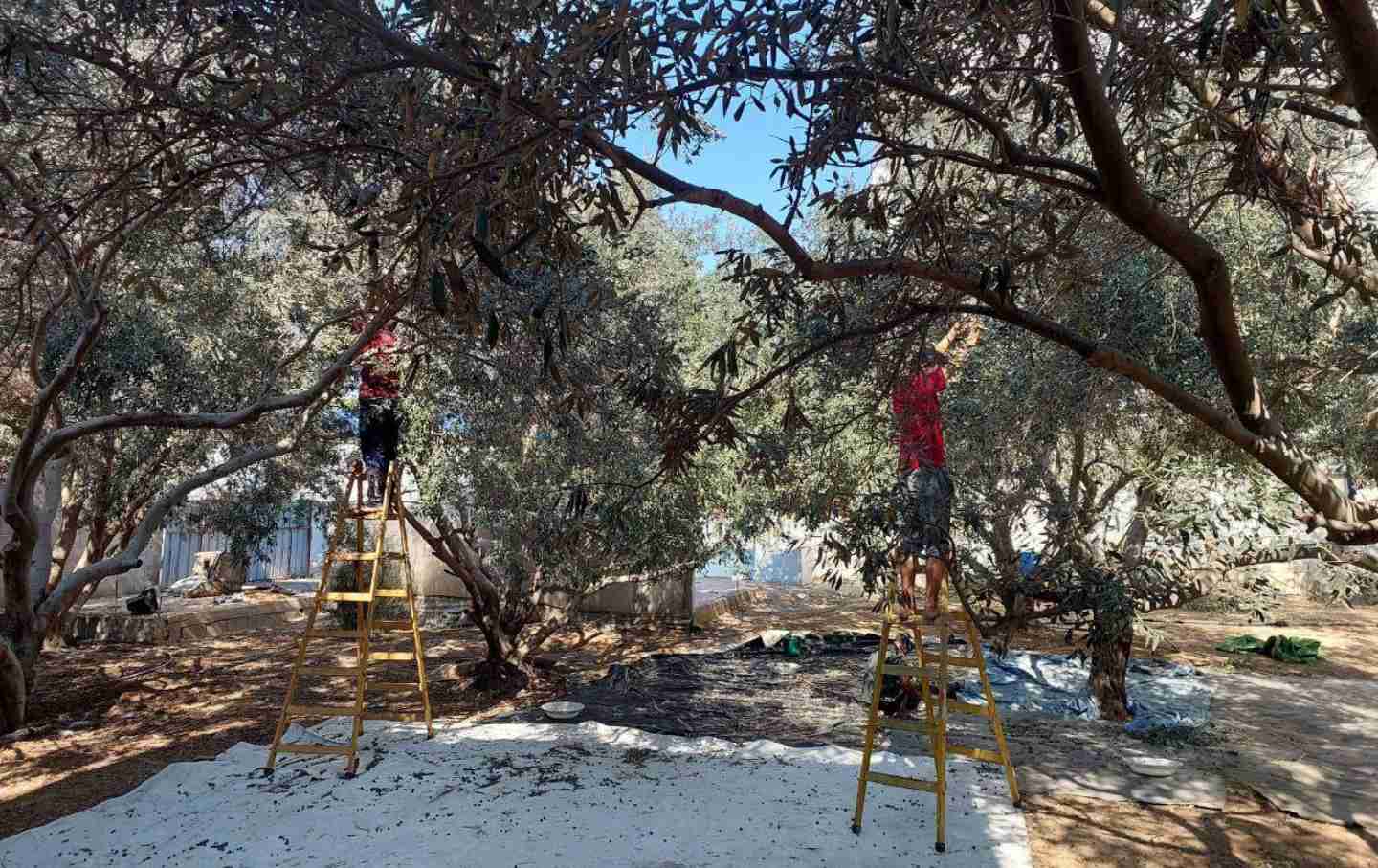
Israel Wants to Destroy My Family's Way of Life. We'll Never Give In. Israel Wants to Destroy My Family's Way of Life. We'll Never Give In.
My family's olive trees have stood in Gaza for decades. Despite genocide, drought, pollution, toxic mines, uprooting, bulldozing, and burning, they're still here—and so are we.
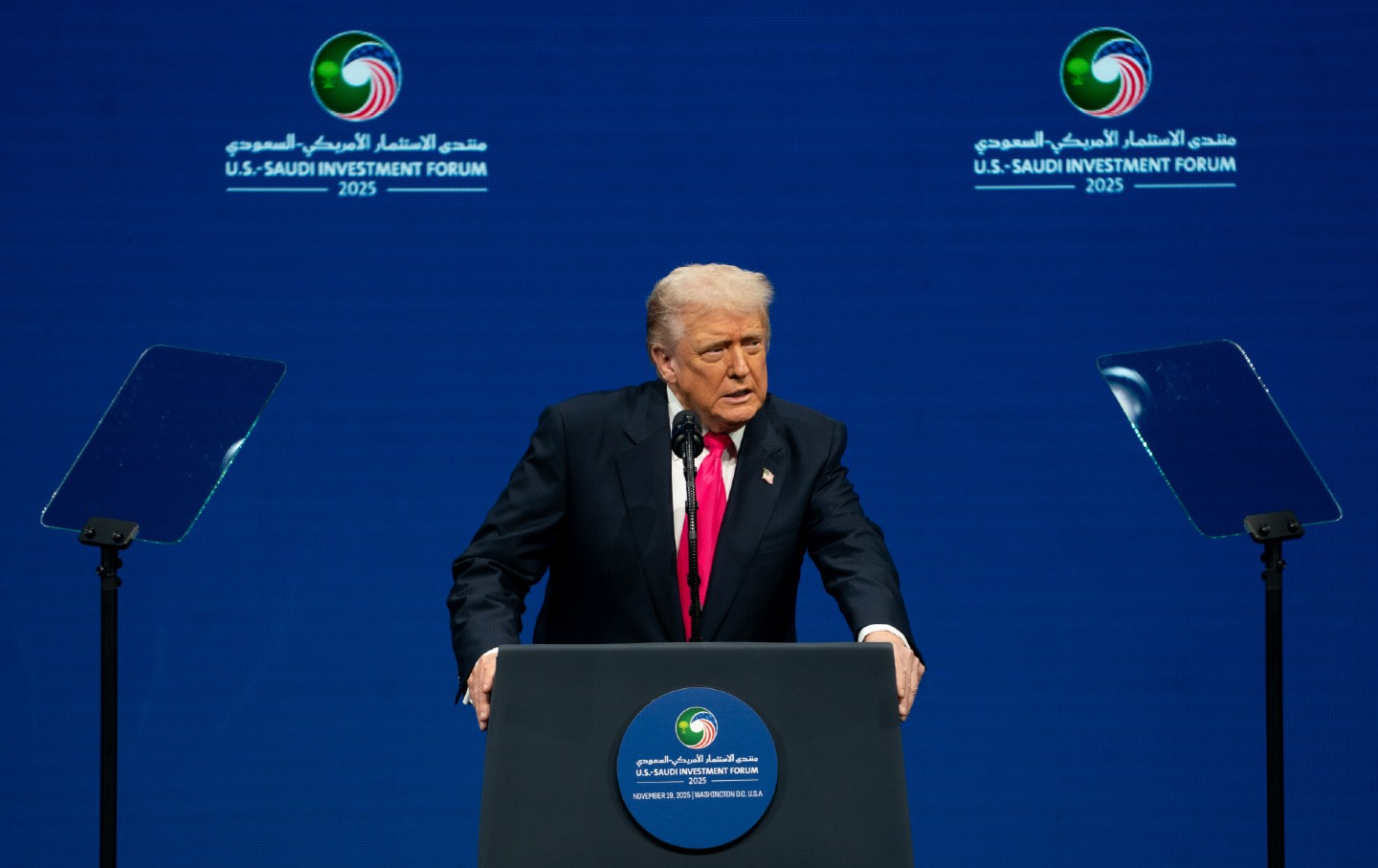
Trump’s National Security Strategy and the Big Con Trump’s National Security Strategy and the Big Con
Sense, nonsense, and lunacy.

Does Russian Feminism Have a Future? Does Russian Feminism Have a Future?
A Russian feminist reflects on Julia Ioffe’s history of modern Russia.

Ukraine’s War on Its Unions Ukraine’s War on Its Unions
Since the start of the war, the Ukrainian government has been cracking down harder on unions and workers’ rights. But slowly, the public mood is shifting.


